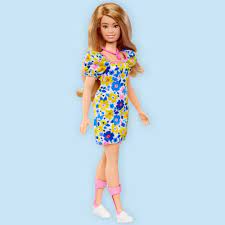
I applaud the initiative by Mattel and other toy manufacturers to market dolls of all ethnicities and different body shapes in an effort to be inclusive. It’s a wonderful world when every young boy and girl can find a doll that represents them.
In the homogenous and monochrome world of the 60’s that I grew up in as a child, the only option for children of color was to play with a white GI Joe and a white Barbie.
Now Mattel is launching a Barbie with Down’s syndrome in an effort to help more kids find a toy that represents them.
“Mattel said it consulted the NDSS and medical professionals to inform the design process, introducing a new face and body sculpt to be more illustrative of women with Down’s syndrome, including a shorter frame and a longer torso.
Guided by the NDSS, the doll’s pink pendant necklace with three upward chevrons represents the three copies of the 21st chromosome, which is the genetic material that causes the characteristics associated with the condition.”
The Guardian
The idea to launch a Barbie with Down’s syndrome was noble, but the execution was a failure. A child with Down’s syndrome will be unable to discern the subtle differences between a Down’s syndrome Barbie and a regular Barbie. In fact, a child with Down’s syndrome won’t be able to tell the difference between a Barbie, a GI Joe or a flashlight.
A realistic Barbie with Down’s syndrome should have a misshapen face and stubby legs.
Mattel is virtue signaling that they are inclusive by marketing the Down’s syndrome barbie, but they need to go back to the drawing board.
